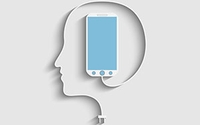 Native ads on mobile sites receive twice
as much “visual focus” from consumers compared to banners on mobile devices, according to a new Sharethrough-commissioned Nielsen study.
Native ads on mobile sites receive twice
as much “visual focus” from consumers compared to banners on mobile devices, according to a new Sharethrough-commissioned Nielsen study.
The results were gathered after a year-long
study of how consumers “visually processed” mobile ads. Nielsen’s Neuro lab used eye-tracking technology and neuroscience to track subconscious brain signals during tests.
For the study, Nielsen compared native ads and banner ads, both placed in-feed. Working with five different advertisers, including Boeing, mock ads were created using “similar creative
elements that were optimized for each format,” Sharethrough, a native ad exchange, writes in a summary of the report.
“Study participants were shown a video simulating the
experience of scrolling through an editorial feed. The feed is paused and the participant is shown either a native ad or an in-feed banner.” Nielsen then “quantified where and how the
participants’ focus was being directed.”
advertisement
advertisement
As noted, the study found that native ads received twice as much “visual focus” compared to banner ads. The study also found
that banner ads are processed more peripherally (“little-to-no visual focus on the text”) compared to native ads. For native ads, consumers focused more on the text of the ad than the
thumbnail.
A total of 146 consumers took part in the eye-tracking test, and 226 took part in the electroencephalogram (EEG) test. The companies assert this is a standard
sample size for both eye-tracking and EEG tests. As for a margin of error, Nielsen says the EEG metrics are “reported at a 95% confidence level.”
It’s
the second time this week that neuroscience data has been
highlighted in a report -- both of which were tied to Nielsen. Marketers are now learning more about how consumers subconsciously react to content and advertising. Programmatic ad platforms fueled by
neuro-data may not be far off.
Eye-tracking technology also made waves last week, when Sticky, an eye-tracking firm, claimed to come up
with a new way to lower the cost of using eye-tracking technology to run tests.
The entire conversation revolves around understanding whether consumers are paying attention to ads, which
is the fire underneath the viewability debate, as well.
In a recent conversation with Real-Time Daily, Integral Ad Science CEO Scott Knoll said that viewability is not just a piece
of the metrics puzzle. Rather, it is the table on which the puzzle is being built. Knoll also contended that “once viewability challenges are
overcome satisfactorily, other measurement metrics will play a bigger role.”
Perhaps we are seeing the start of those other measurement metrics, and marketers are going straight to the
source: brainwaves.